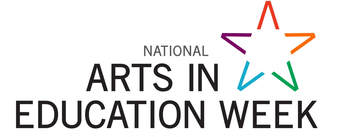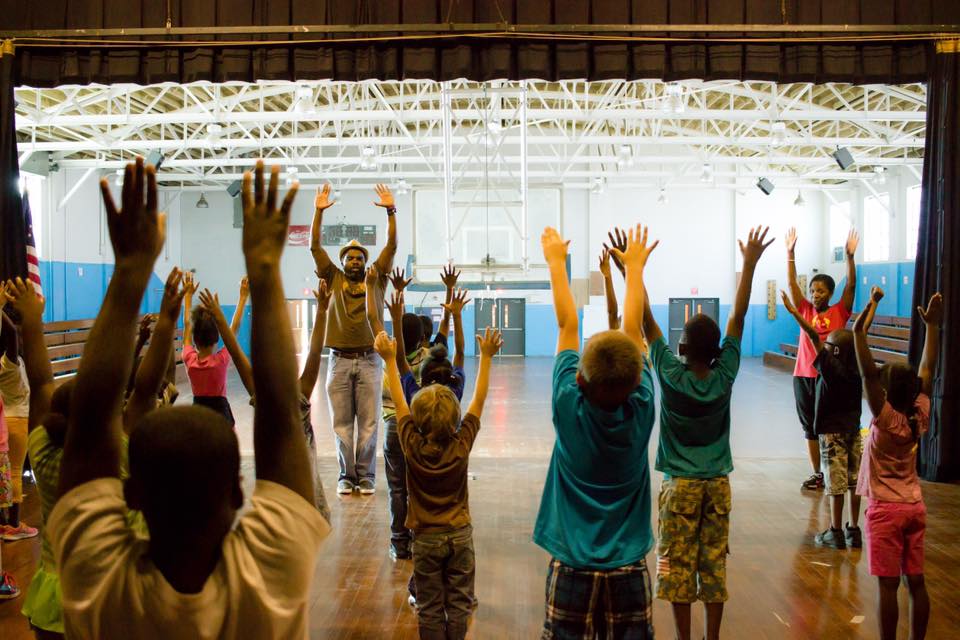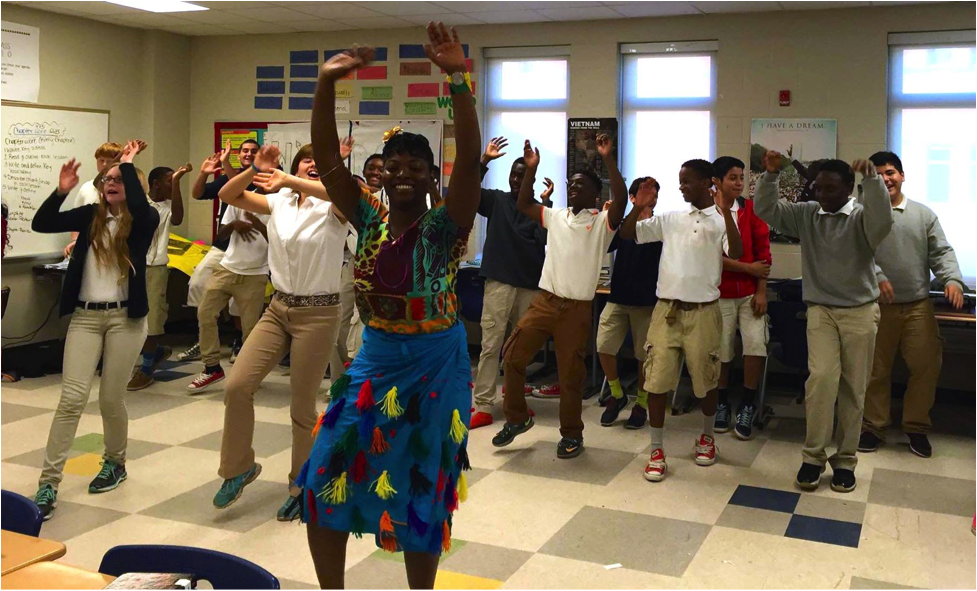|
South Carolina schools are looking for arts teachers! Most of the arts areas, including dance, music, theatre and visual arts are listed as critical needs areas in the State. So, what does that mean for those of us who went through our undergraduate years without taking even one course in teacher education? Perhaps we thought as undergraduates that a teaching career would never interest us, or we became so involved in our arts majors that we didn’t have any time to take teacher preparation courses. Now, we may have a different mindset. After a successful career as an artist, perhaps, we want to give back to the field that helped us so much to be the successful creative entrepreneurs that we are, or perhaps, we have had a change of heart and really want to contribute to the artistic wellbeing and growth of young people, or perhaps we want to ensure that there is a future audience for the arts, or perhaps we understand that the arts are necessary for a happy and well-balanced life. So what should we do now? Is it too late? Has a life as a classroom teacher passed us by? By all means, no. There are at least two routes to obtain teacher certification after receiving a bachelor’s degree in an arts discipline without taking the requisite education courses as an undergraduate. One route is through a process called PACE (Program of Alternative Certification for Educators). This is a three year program for degreed individuals who otherwise do not meet certification requirements. Details on this program can be obtained by contacting [email protected]. The other route is to obtain the Master of Arts in Teaching, offered by several of our South Carolina institutions of higher education. Since I’m at the College of Charleston, I’ll use our MAT programs as examples. We offer the MAT in Performing Arts with two concentration areas, Choral Music and Theatre. Successfully finishing the MAT with the concentration in choral music will qualify you to be recommended to the SC Department of Education for South Carolina certification in general and choral music at grades P-12. Following the concentration in theatre will qualify you to be recommended to the SC Department of Education for certification in theatre at grades P-12. The MAT in Performing Arts requires 45 hours of coursework and takes at least two years. Twenty-four hours will cover core requirements (such as basic education courses) with twenty-one hours in the specific arts concentration. You’ll spend one year on fieldwork and one semester on clinical practice (I think this used to be called student teaching!) Once you receive the MAT and pass the PRAXIS exam, you are recommended to the SC Department of Education for certification to teach. And there are lots of jobs available in critical needs areas in the arts. South Carolina desperately needs teachers who specialize in the arts! If you feel the calling, why not give it a try? Through PACE or the MAT route, you can positively change your life and the lives of South Carolina young people.
0 Comments
I remember reading an online article from the Washington Post (11/27/17) on teacher retention. It stated that more than 40% of all teachers leave the profession within their first five years with even higher rates for high-poverty, high-minority public schools. This should be a major concern. Losing our teachers is a serious matter. As educators, we need to be relentlessly proactive in our efforts to maintain qualified professionals in the classroom.
In my opinion, a critical first step to retain our teachers is to find out why they are leaving. Candid conversations need to take place to uncover what is “pulling” them away from the profession and what can be done for them to “stick and stay.” If we continue to lose teachers, we are putting the quality of instruction that our children receive at risk. In my district, I witness the challenges that administrators face each year in trying to ensure that there are highly qualified teachers in front of students. As the district’s Visual and Performing Arts Coordinator, I encounter the same challenges with maintaining qualified fine arts faculty. I know that the best-qualified arts educators are looking for environments where the arts are an equal part of CORE-curricula and not just the “icing on the cake.” They want state-of-the-art facilities, equipment, materials and resources. They also want district-level administrators to understand the arts aren’t just a reprieve for students from the day-to-day routine of the “ordinary classroom,” but that students will leave with skills they will use throughout their lives. In talking with arts teachers, they say that they don’t feel that their principals understand that arts classes are standard-driven and provide rigor – that they don’t understand how fine arts instruction ignites higher order thinking skills and gives students opportunities to have “real life” experiences. If school leaders do not acknowledge the power of the arts and the positive impact they have on student learning and support these teachers, fine arts teachers will continue to become harder to find with the ones who are still in the field looking to other more supportive school cultures. One of my closest friends and colleagues is Mr. James A. Stroman, Sr., the district’s elementary band consultant. Mr. Stroman is my “go to” person for good, solid advice. With his years of experience and expertise, I often pick his brain for best practices he has learned over the years. So I asked him, “What can I do to prevent teachers from leaving our district after only one or two years?” He shared the following insights. In order to maintain and sustain your teachers, you as the fine arts coordinator need to implement a plan that includes the following:
His good advice made me realize how critical it is to have a plan in place. It needs to be a support system for both new and veteran fine arts educators, and one that reduces any barriers to open communication. Mr. Stroman’s advice also serves as a reminder that just as our students love to hear when they have done a good job, my fine arts teachers need that also. Too often upper level administrators focus on how important students are to our success but they repeatedly forget to recognize how crucial teachers are to the success of those students. In conclusion, rather than have teachers leave our district in pursuit of a better opportunities, we need to work to become the BEST option for those teachers.
Ms. Donnan’s 7th grade drama class changed my life. I know that sounds dramatic, and it is. But it is also true. In drama class, I found my people. I found a creative outlet. I found a place where it was okay to be, well, dramatic. I also found a path to where I am now, the arts education director at the SC Arts Commission. From Ms. Donnan’s drama class I went on to be involved in every aspect of theatre life at the South Carolina Children’s Theatre. As a teenager at SCCT I could be found on stage, back stage, and assisting classes – I had the unique opportunity to explore all areas of my chosen craft. This led to a BA in Theatre from Winthrop University, a career as a theatre artist and administrator at Children’s Theatre of Charlotte, and several years as a drama teacher at Stone Academy of Communication Arts. After receiving my MFA in Theatre Management from Florida State University and spending two years working as the education manager for Opening Nights Performing Arts at Florida State, I journeyed back to South Carolina to join the team at the South Carolina Arts Commission. I can trace the path from Ms. Donnan’s 7th grade drama class directly to where I sit now, writing this blog post.  As we celebrate National Arts in Education Week, I can’t help but think of all the Ms. Donnans of the world. The teachers and mentors who provide opportunities for students to explore, create, and discover. Access to the arts can be a game-changer for young people. Students in schools with arts-rich learning outperform their peers in schools with low arts access (Arts Education Partnerships). According to the National Endowment for the Arts, teenagers of low socioeconomic status who have a history of in-depth arts involvement earn better grades and demonstrate higher rates of college enrollment and attainment than their peers. Time and again we see the impact the arts have on students and we celebrate the citizens they become. These days I have the good fortune to occasionally cross paths with Ms. Donnan. I still think she’s a rock star and jump at any chance I get to work with and learn from her. When I first saw her after I was hired at the Arts Commission, I shared how her drama class inspired me to pursue theatre and that she was basically the reason I stood before her in this new job. She laughed and told me that when she taught me she was a fresh new visual art teacher, just a few years out of college. Her principal told her she was going to teach a drama class and she felt like she had no idea what she was doing. She just put one foot in front of the other and tried her best to give students a space to learn about and explore theatre. Explore, create, discover. My life was changed by a teacher who was just trying her best - putting one foot in front of the other and doing the work. And isn’t that what it is all about? Day after day, teachers and mentors in the arts put one foot in front of the other and try their best. In honor of National Arts in Education Week, I say to the teachers and mentors of the arts education world… you have no idea the impact you make. You never know who you will inspire, what they will go on to do, or how you change the future. The arts challenge the status quo and encourage students to dig deep. They build character and help students become citizens of the world. So march forward, one foot in front of the other. Work to ensure all students have access to quality arts education experiences. Allow students to explore, create, and discover. Because I promise you, you don’t even know it yet, but you are someone’s Ms. Donnan. #BecauseOfArtsEd
Growing up as a child living in a small town in the rural south, I attended school with a multitude of cousins and spent the summers with my grandparents.
How I loved those summers! I’d leave on a Monday morning, bag packed, to spend hot South Carolina days visiting with my grandparents. I remember cutting flowers in the garden, eating tomato sandwiches, and dripping-down-your-chin peaches. I could usually be found painting in the barn loft, building forts in the woods and digging clay from the creek behind the house. Above all, what I remember from my summers was enjoying more creative moments in those two short months than the rest of the year combined. An imaginative and productive family surrounded me. My uncle was a wood carver; my cousin was a sculptor, and my grandmother was a quilter. They were all artists. Their homes were galleries, complete with original pieces of art, simply functional at times but always beautiful. Repurposed tools became sculpture, bolts of textiles and scraps of fabric became quilts or tapestry hangings, all with the timeless elegance of quality. Innovation and creativity were important to my family-a cultural nexus. The making of art was fundamental and came with the sheer joy of creating something new with a unique sense of style. I was given the freedom to experiment with materials, found objects and the space to work on a big back porch. I didn’t know it then but what I was given in those early formative years was a creative spark, or “expeditionary learning”. This catalyst of self-discovery inspired me, motivated me to learn, and fostered curiosity. My story is not a rare one. No anomaly, but rather I joined a legion of individuals who have found meaning, a method of communication, and a veritable lifeline through exposure to the arts. This creative stimulus was further fueled via encouragement from arts educators in my local school district. As I grew up, I gained more perspective and a deeper understanding with the study of art in school. Beginning with my first art class, my art teacher, Liz Smith, was such a positive influence on me I immediately knew that I too wanted to teach art someday. We traveled to galleries, museums and visited artists’ studios. I experienced first hand her dedication to our profession and she affected my life in a profound way. She inspired me as an artist and ultimately to seek a career as an art teacher. She encouraged me to pursue an arts education in college where I was mentored by Roger Wolford. What a difference great teachers can make! Again, I share my story as yet another illustration of why it is important to advocate for the importance of a quality, sequential arts education in our schools. For many children, school is the only place where they will get this kind of exposure that will stimulate their creativity. Once it’s sparked, truly sparked, it cannot be diminished, but it must be encouraged. If it had not been for this exposure, I would not know creativity and all of its possibilities. Instruction in the arts can keep our most at-risk students from falling through the cracks. We need the arts so students may have a place to celebrate individuality. One example from my early teaching career centers around a painting class made up of twenty 8th grade boys. I began the year by giving them an art survey to determine their level of knowledge. The results were telling. When I asked, “What are the primary colors?” The answer I received was, “The really important ones.” They thought Leonardo Di Caprio painted the Mona Lisa and Raphael and Michelangelo were both Teenage Mutant Ninja Turtles. I threw out all my lesson plans and started over to create individualized instruction. Curriculum that lent relevance to their lives, gave them confidence and avenues for success. And successful they became! These were students who had never picked up a paintbrush or lump of clay. These are the students I keep in the back of my mind when I am advocating for arts education in South Carolina—students who do not even know that they are artists, actors, musicians or dancers. In addition to creativity, an education in the arts does an excellent job of giving students the skills, knowledge and understanding that leads to art making and skills that last a lifetime. Students will either be creators of or consumers of art. In my current position, I have found that arts education, in all its disciplines, creates a connection with the community at large by utilizing the arts as a tool for communication with families and fostering relationships. As school districts partner with higher education institutions, arts organizations, and local businesses, we expand the opportunities for student exploration and learning. Our most gifted art students need accelerated courses such as Honors and Advanced Placement to best serve their needs. Art education is visible, vital and valued in Spartanburg School District One. I am fortunate to work to work in a district that does not marginalize the arts but has embedded a vision for our program within each school, and has formulated a plan to achieve it. In fact, Dr. Ron Garner was the 2013 South Carolina Art Education Association Art Advocate of the Year. A student-centered approach recognizes that art education contributes to the overall growth of experience; it enhances the meaning of everyday life and provides cognitive development. In the process, students develop a passion and commitment to achieve excellence as they master the communication, problem-solving, and technical skills to allow for a high-quality personal and work life. As arts educators, we encourage creativity to meet the demands of the rapidly changing workforce of the 21st century. More specifically, in South Carolina, the arts align with the following elements for success; World Class Knowledge, World Class Skills and Life and Career Characteristics, as outlined in the framework that supports the Profile of the South Carolina Graduate. Not only does art teach pride in the satisfaction of a job well done, but the arts also teach our students not only how to look at the world differently but how to perceive the world differently.The arts are not elitist; they are in fact, inclusive. The arts have always reflected an awareness of social and cultural contexts. In our world where multitasking is commonly praised, the gift of deep thinking and the creativity and freedom that it brings, are skills that the arts teach. This is the spark that an education in the arts can bring. Finally, the educational success of our children rests on creating a school environment that is both literate and imaginative, both competent and creative. There exists a robust body of research in various scientific fields including sophisticated brain imaging techniques supporting the idea that music, dance, theatre and visual arts positively affect cognition and intelligence. But consider this, should we just teach art for arts sake? Yes, because it is the right thing to do for our students and can create lasting, positive change. Art, taught with passion and purpose, encourages a child’s creative spark and is an essential part of the fabric of a child’s education. I believe that all children should experience such a spark. Arts education fosters the discovery of our innermost creative selves. Just like that little girl I once was, many students crave a creative outlet. They deserve it. I grew up on one of the Finger Lakes about forty miles east of Rochester, New York where summers were spent in a carefree existence of riding bikes and playing tag. Our concerns were the color popsicle we’d get at the end of the day (hopefully cherry) and if the fireflies would be out that night. I can remember so many specific details from my childhood summers, almost forty-five years ago, as if they happened yesterday. Yet, I don’t remember the capitols of all fifty states (even though I memorized them in 5th grade) and I can recite less than ten presidents in order (even though at one time I could rattle off Washington to Ford in less than two minutes). Why is it that we remember some things, while others fade away almost immediately? I’ve learned through the years that what we remember is connected to experiences that were fun, engaging and interesting. The things that get us excited and that spark our curiosity are the things that keep us motivated and inspired to the point we often lose track of time. When I was teaching first grade, I would start virtually every lesson or book by tapping into my students’ past experiences. “Who has seen a bird’s nest,” “Have you ever slipped on a wet rock?” Inevitably, the high achievers in my class were always the students who had a wide range of experiences and opportunities, especially over the summer. From horseback riding to playing guitar, swimming in the lake or playing Kick the Can, those experiences provided the platform for future learning. It’s important to point out here that incidental learning is just as important, and sometimes more important, than intentional teaching. My summer experiences provided opportunities such as learning about plants by creating my own terrarium or reinforcing geometry and engineering when we were building a tree fort. Play is a child’s job.
Tips to Prevent Summer Learning Loss
For more tips, see our article in the spring issue of National Association of Elementary School Principals Magazine. And lastly, please consider participating in National Summer Learning Day on July 12, 2018. National Summer Learning Day is a national advocacy day aimed at elevating the importance of keeping kids learning, safe and healthy every summer, ensuring they return to school in the fall ready to succeed in the year. Your participation sends a powerful message across the nation that summers matter and offers an opportunity to showcase how summers can make a life-changing difference in the lives of young people.
|
About PSAEPalmetto State Arts Education is a network of professionals dedicated to advancing learning in and through the arts for all students in South Carolina. Categories
All
|












 RSS Feed
RSS Feed